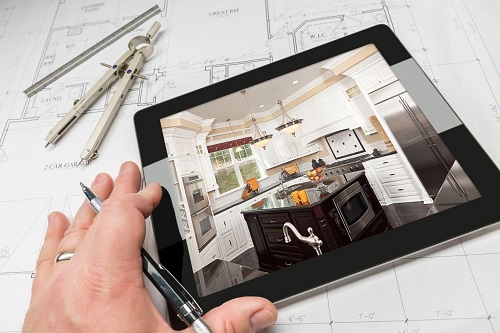Starting a home renovation is an exciting time — you probably can’t wait to see your refreshed spaces come to life! Amid all the design choices and updates, it’s easy to overlook one very important part of the process: your plumbing. Paying attention to plumbing from the very beginning can save you serious headaches later. Getting it right now also adds real value to your home, making sure everything stays functional, efficient, and safe for years to come. Let’s look at some key plumbing considerations to help you plan a smooth and successful renovation.
Assessing Your Current Plumbing System
Before jumping into any renovations, it’s wise to check your current plumbing setup. Start by looking for signs of trouble, like leaking taps, slow drains, or water stains on walls and ceilings. These can signal hidden leaks or outdated plumbing that might not support your new design. It’s also a good idea to call in a professional plumber to do a thorough inspection. An experienced plumber can assess your pipes, fixtures, and water pressure and identify any hidden issues. That way, you’ll know exactly what you’re working with before you start making changes.
By starting with a proper inspection and getting help with plumbing for renovations, you’ll lay a solid foundation for the rest of your project and prevent surprises later on. Licensed plumbers can identify hidden problems and assess the condition of pipes and fixtures, thus guiding your renovation plans effectively. This step prevents potential disruptions later in the project and ensures you’re building on a sound foundation.
Planning for Plumbing Upgrades
Home renovations frequently require modifications to existing plumbing layouts. Whether you're adding a bathroom, upgrading a kitchen, or reconfiguring a laundry room, understanding how renovations impact plumbing is vital. Evaluate whether your current system can support the changes or if upgrades are necessary.
Timing plays a crucial role when considering upgrades. Align plumbing upgrades with major renovation phases to minimise disruptions. Upgrading fixtures and piping during renovations can be cost-effective, preventing the need for future retrofits. Establishing a budget for plumbing renovations helps streamline decisions. A well-planned budget includes potential costs for materials, labour, and unexpected issues.
Coordination with contractors facilitates seamless integration of plumbing within the broader renovation framework. Regular communication ensures that all parties are aware of the plumbing requirements, enabling smooth progression without conflicts.
Choosing the Right Materials and Fixtures
The choice of materials impacts both the functionality and aesthetics of your renovations. Various piping materials, such as copper, PVC, or PEX, have distinct advantages and drawbacks. Understanding the pros and cons can help you in selecting the best option for your needs. Copper pipes, while durable and corrosion-resistant, can be more expensive. Conversely, PVC and PEX offer flexibility and affordability but may not always align with higher aesthetic demands.
Water efficiency is another crucial factor. Opting for water-saving fixtures reduces water bills and aligns with sustainable living practices. Investing in quality fixtures ensures durability, which is essential for long-term renovation success. Meanwhile, aesthetic considerations should complement your renovation style, ensuring a harmonious blend between fixtures and overall design.
Common Plumbing Challenges During Renovation
Renovations can present unexpected plumbing challenges, which, when unprepared for, can delay progress and inflate costs. Encountering hidden pipes behind walls or outdated systems is a common issue. Strategies like thorough pre-renovation inspections and detailed planning can alleviate such concerns.
Adherence to local plumbing codes is non-negotiable. Compliance ensures safety and legality, avoiding potential fines and complications. Staying informed about regulations and working with certified professionals helps ensure that your project meets necessary standards.
Should issues arise, expert tips for troubleshooting can be invaluable. Simple fixes, such as tightening loose connections and unclogging drains, can sometimes alleviate more considerable problems and prevent delays.
DIY vs. Professional Plumbing Work
One of the fundamental decisions during renovations is choosing between a DIY approach and hiring professionals. While minor tasks like replacing a tap or unclogging a drain may suit DIY enthusiasts, more extensive tasks often require certified skills.
Large plumbing tasks, including pipe replacement and major fixture installations, should be entrusted to professionals. Engaging a certified plumber ensures adherence to building codes and mitigates risks of inferior work, which could lead to more significant issues down the line.
Calculating potential savings is a crucial part of this decision. While DIY might appear cost-efficient initially, professional services often lead to long-term savings by avoiding mistakes that require costly repairs.
Take the Next Step Toward a Stress-Free Renovation
In conclusion, navigating plumbing during renovations involves a careful balance of assessment, planning, and execution. From assessing existing systems to choosing materials and deciding between DIY or professional work, each step plays a critical role in renovation success. The integration of modern plumbing solutions can enhance both functionality and property value, making the upfront effort worthwhile. Keeping these considerations in mind ensures a smooth and successful renovation journey. When in doubt, seeking professional advice is a sensible move to safeguard your investment and ensure peace of mind.






































